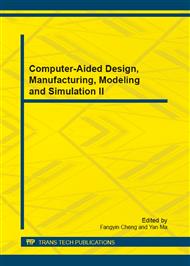p.718
p.723
p.728
p.733
p.738
p.744
p.749
p.754
p.759
Turbo-Shaft Engine Model Compensation Based on LSSVR
Abstract:
Considering the larger modeling errors between the turbo-shaft engine and on-board model, the model correction method based on least squares support vector regression is proposed. Firstly, the modeling principle of on-board turbo-shaft engine model is introduced, and then the structure of model combined with a compensation module is designed. The algorithm of LSSVR is used to build up the model compensation module, which is trained off-line and corrected on-line. Simulation studies on turbo-shaft engine have shown that the LS-SVM method can effectively reduce the model errors, and comparison with the interpolation correction, neural network one, the method proposed has better precision.
Info:
Periodical:
Pages:
738-743
Citation:
Online since:
December 2012
Price:
Сopyright:
© 2013 Trans Tech Publications Ltd. All Rights Reserved
Share:
Citation:


